Dog Won’t Pee in Rain: Expert Solutions for Your Stubborn Canine
When the rain pours down, it’s not uncommon for dog owners to notice that their furry friend refuses to go outside and do their business. This can be quite puzzling, especially if your dog normally doesn’t hesitate to venture outdoors. Let us explore this behavior and figure out why some dogs are so reluctant to pee in the rain.
For many dogs, the aversion to going out in the rain comes down to a matter of comfort. The sound of raindrops pattering against the ground and their fur can be unsettling, while the sensation of wetness might make them feel uncomfortable.
Understanding these factors is important to help your dog feel more at ease when facing wet weather.
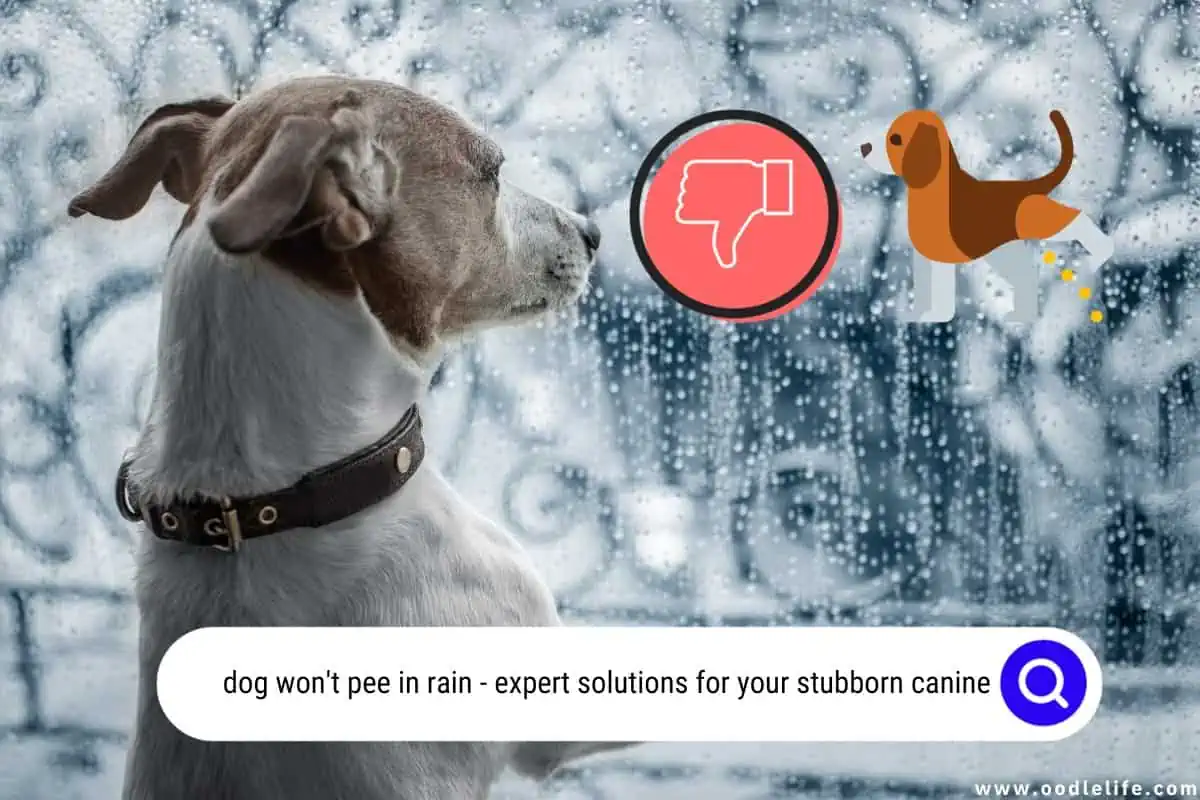
To make this process easier for you and your canine companion, try to create a positive association with going outside in the rain. Offer treats, praise, and affection as encouragement. Remember, patience is key and with effort, your dog will eventually learn that there’s no reason to fear getting a little wet.
Understanding Canine Behavior in the Rain
Weather conditions, such as rain, can greatly impact your dog’s behavior. Some dogs may not want to go outdoors in the rain because they are uncomfortable with the sensation of getting wet or the sound of raindrops hitting the ground. However, it is essential for them to go for a walk, so they can pee and relieve themselves.
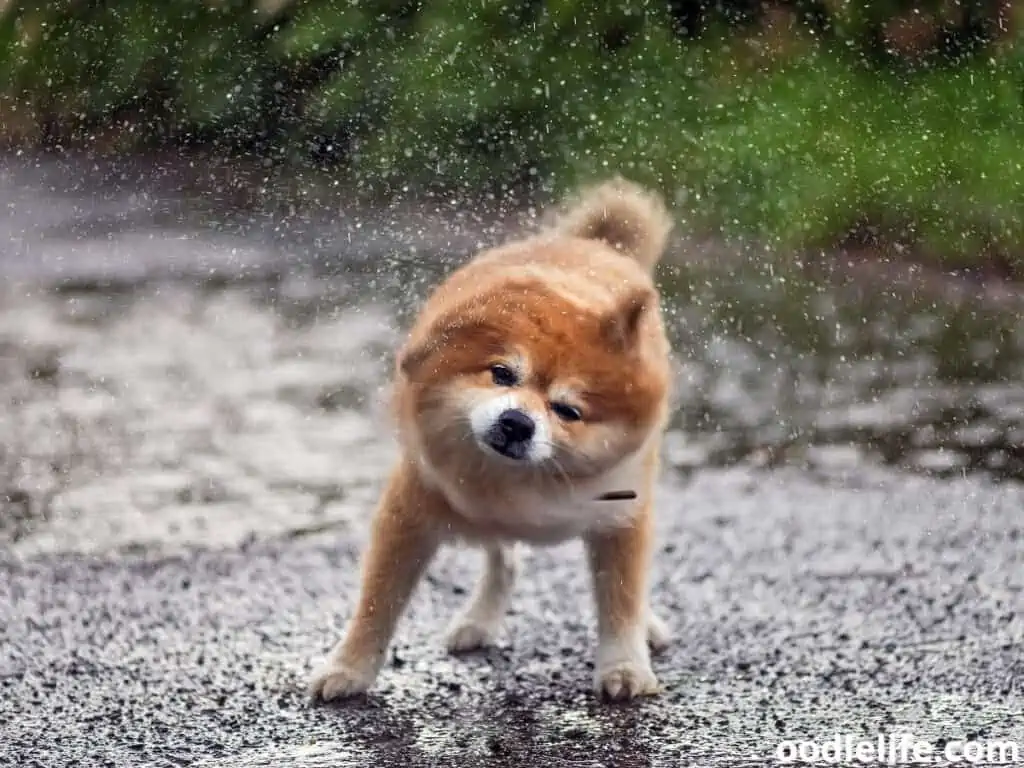
As a dog owner, you should be aware that puppies and adult dogs may exhibit different levels of anxiety during rainy weather. While puppies may be curious and open to exploring, adult dogs might be more hesitant due to past experiences. To help your dog overcome their anxiety around rain, try using positive reinforcement and offering treats when they go outside.
Establishing a consistent command, such as “go potty” or “time to pee,” can help your dog associate the action with the need to relieve themselves. Use this command consistently, regardless of the weather, so your dog understands what is expected of them. Additionally, be patient with your dog, especially if they are experiencing anxiety or fear.
They may take longer to assume the right position or find a suitable spot to pee.
An umbrella can be a helpful tool to shelter your dog from the rain and make them feel more comfortable. However, you should first ensure that your dog isn’t afraid of the umbrella itself. If they are, gently introduce the umbrella using positive reinforcement before using it during walks.
In conclusion, understanding your dog’s behavior in the rain can help you better support them when they need to go outside to pee. Be patient, use consistent commands, and try to make the experience as positive as possible for your dog.
Preparing Your Dog for the Rain
Rain can be an inconvenience for both you and your furry friend, especially when it comes to potty breaks. To make the process smoother, it’s essential to prepare your dog for the rain. This involves providing proper rain gear, such as a raincoat and booties, as well as acclimating them to the weather.
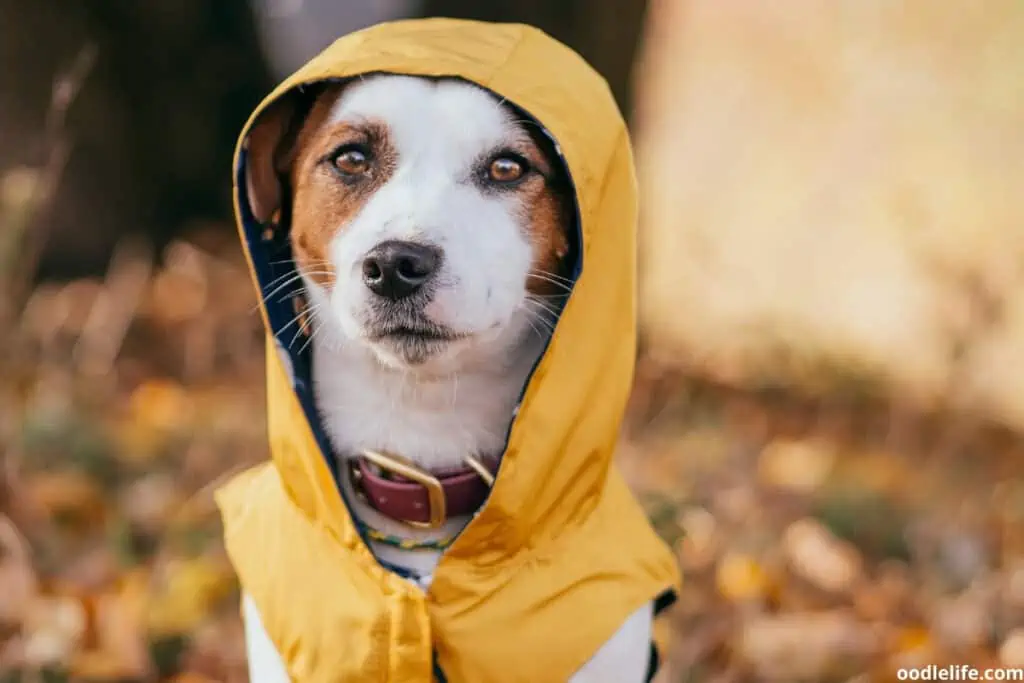
A dog raincoat is a handy item to have when it’s wet outside. It will keep your pet warm and dry, making them more comfortable during their potty breaks in the rain. Choose a dog raincoat that is the correct size and has a secure closure to ensure it stays in place during walks.
Dog boots, or booties, are another useful accessory to help your pet in the rain. Not only do they protect your pup’s paws from cold, wet surfaces, but they also provide extra traction for slippery surfaces. Make sure the dog boots fit properly by measuring your dog’s paws and selecting the appropriate size.
In addition to rain gear, it’s important to acclimate your dog to the rain. Start by taking them for a walk during a light drizzle to help them get used to the sensation of water on their fur. Gradually increase the duration and intensity of the rain exposure, praising and rewarding them when they do their business outside in the rain.
Introducing items like the raincoat and booties indoors prior to rainy weather can also help your dog feel more comfortable. Put the rain gear on your dog inside your home, allowing them to walk around and get used to the feel. This way, when it’s time to venture out in the rain, your pet will be familiar with their new apparel.
With a little preparation, your dog can learn to embrace rainy walks and potty breaks. Providing the proper gear and helping your dog acclimate to wet environments will make the experience smoother and more enjoyable for both of you.
Indoor Bathroom Alternatives During Rainy Days
Sometimes your dog just won’t pee in the rain, and that’s okay. As a dog owner, it’s important to be patient and understanding of your dog’s preferences. Here are some indoor bathroom alternatives for those rainy days when your dog refuses to go outside:
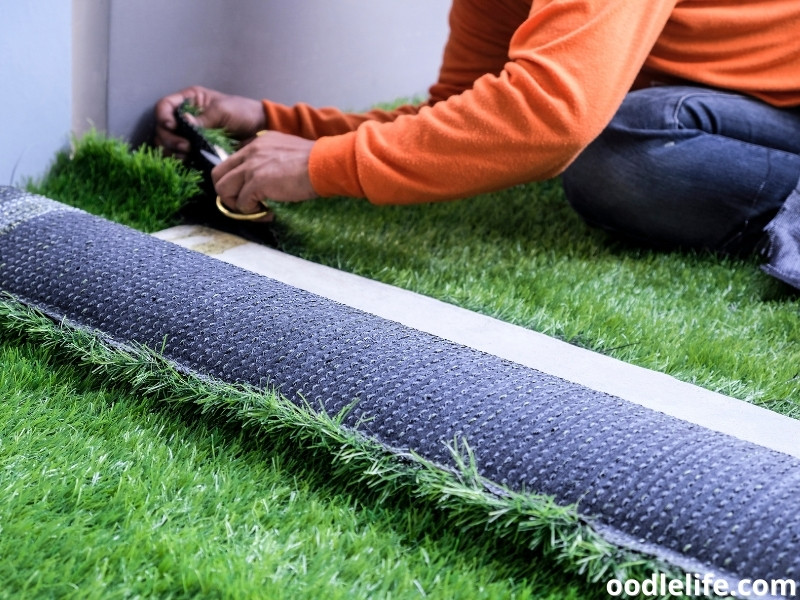
One option to provide a comfortable bathroom break for your dog is to train them to use an indoor potty. Indoor potties come in various forms, such as artificial grass or absorbent pads. These can be easily placed inside your home, providing your dog with a designated area to relieve themselves.
Start by introducing the indoor potty and rewarding your dog when they successfully use it. Over time, they’ll associate the indoor potty with their bathroom break, making it easier for them on rainy days.
Another alternative is to use a covered, outdoor area that provides shelter from the rain. This could be a garage, a covered deck, or a patio. Encourage your dog to use this area by taking them out on a leash and waiting for them to do their business.
Be sure to reward your dog with praise or treats when they successfully go in the designated area. This will help reinforce the behavior and make it more likely for them to choose this spot in the future.
If the rain isn’t too heavy, you can also try waiting for a break in the weather. Keep an eye on the forecast and take advantage of any pause in the rain to take your dog outside for a quick bathroom break. Be patient, as some dogs may take longer to feel comfortable enough to relieve themselves.
In some cases, it may just be a matter of making the experience more pleasant for your dog. You can try using an umbrella to shield them from the rain or putting on a doggy raincoat for added protection. Some dogs may not be used to wearing rain gear, so be sure to introduce these items slowly and praise your dog for cooperating.
Finding an indoor bathroom alternative for your dog during rainy days requires patience, training, and creativity. By considering your dog’s needs and preferences, you can ensure they get their much-needed bathroom breaks without having to endure the discomfort of going out in the rain.
Overcoming Fear of Wet Surfaces
Some dogs are reluctant to go outside and pee in the rain due to the unfamiliar sensation of wet paws and wet grass. To help your dog overcome these fears, start by understanding the root cause and working step by step to ease them into the situation.
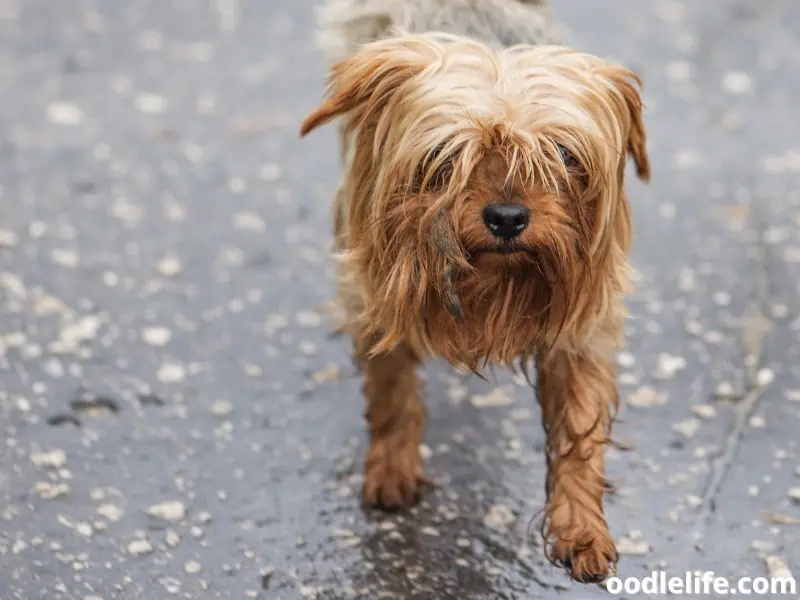
Begin with gradual exposure to wet surfaces. Lay a wet towel on the floor and encourage your dog to step on it using positive reinforcement, such as treats and praise. Once your dog becomes comfortable with wet paws, introduce them to wet grass in a controlled outdoor environment on a dry day.
Use a spray bottle or sprinkler to wet the grass slightly and reward your dog when they venture onto it.
Once your dog is comfortable with wet paws and wet grass in the controlled environment, replicate the rain by using an umbrella to create a dry zone for your dog. Practice walking your dog under the umbrella on wet surfaces so they associate it as a place of comfort and protection from the rain. Always reward your dog with treats and praise for progressing through these steps.
Introduce specific cues during these training sessions, such as phrases like “time to go potty in the rain” or “let’s go pee-pee” so your dog associates the phrase with the action. This makes it easier for your dog to understand what you expect from them when it’s raining outside.
When it’s raining lightly, bring your dog outdoors with the umbrella and use the established cues. Remain patient as your dog may still be hesitant, but maintain a confident and neutral tone while giving them time to adjust. Gradually increase the duration and intensity of rain exposure, keeping a close eye on your dog’s comfort levels.
Remember that each dog is different, and progress will vary. Be patient, consistent, and understanding as you help your furry friend overcome their fear of wet surfaces.
Using Protective Equipment for Rain
Rainy days can make it difficult for your dog to do their business outside. However, there are ways to encourage your dog to go out in the rain and make that necessary trip outside more comfortable. One solution is using protective equipment, such as umbrellas, large umbrellas, or tarps, to provide some shelter from the rain.
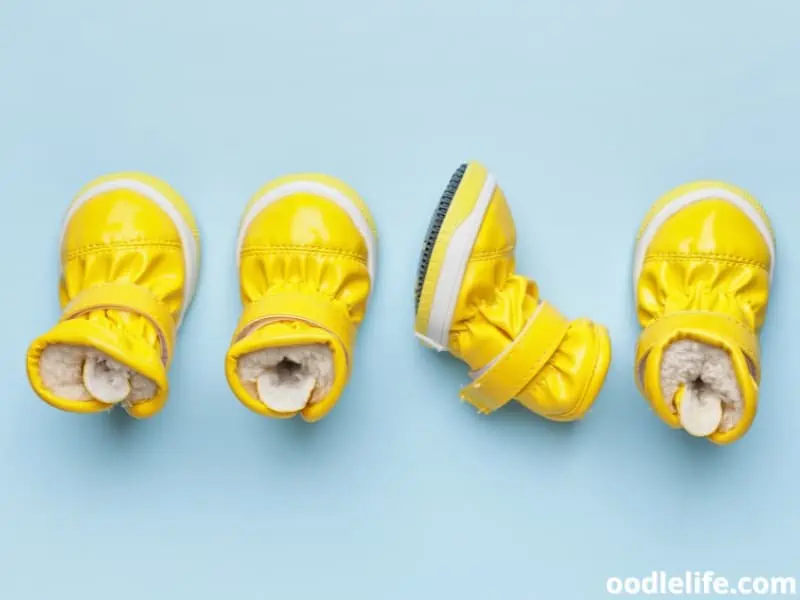
When using an umbrella, it’s essential to choose one that’s big enough to cover both you and your dog. This will allow you to be close to your pet while also keeping them dry. You can walk your dog on a leash, holding the umbrella over their body as you move.
Though it may take some time for your dog to adjust to this new routine, they may eventually begin to associate the umbrella with staying dry in the rain.
If you have a larger dog or simply prefer a bigger shelter option, a large umbrella or even a tarp can do the trick. This setup could work well in your backyard or any space where the tarp can be anchored. It will shield your dog from rain while giving them a designated, dry area to relieve themselves.
Remember to keep the shelter at a proper height to ensure there’s enough room for your dog to move around comfortably.
When introducing your dog to these protective equipment options, it’s crucial to remain patient and consider their perspective. Some dogs may be hesitant or scared initially, so make sure to take it slow and reward your dog for any progress they make. Consistent praise and positive reinforcement can help them adjust more quickly to the new situation.
With the right protective equipment and a dose of patience, your dog will be more likely to go outside and do their business even on rainy days. Experiment with the various options mentioned above, and you’ll find a solution that works best for both you and your furry companion.
The Importance of Rewards and Reinforcements
As you train your dog to handle rainy weather, it’s critical to incorporate rewards and reinforcements. A well-timed reward can encourage your furry friend to brave the rain and do their business outside. Remember, positive reinforcement is all about providing a pleasant outcome for the desired behavior that makes your dog more likely to repeat it.
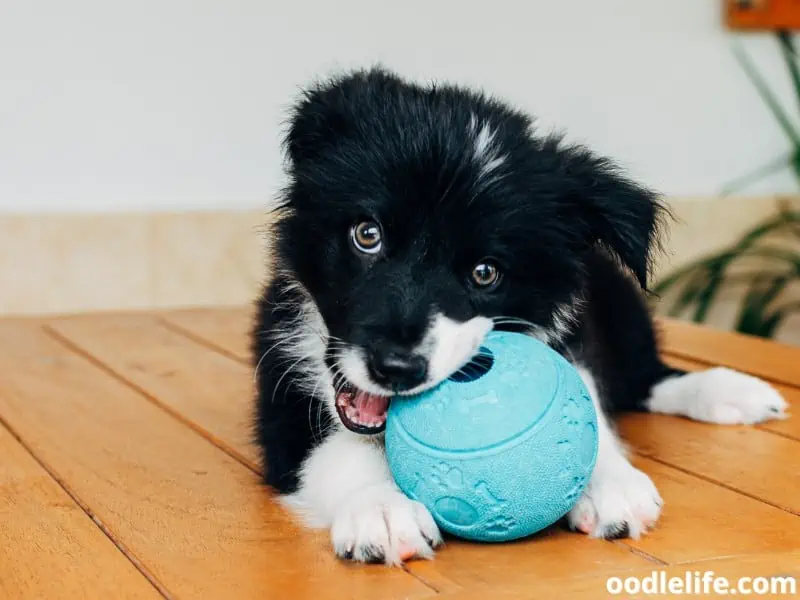
Consider using your dog’s favorite toy or treat as a reward when they pee in the rain. This simple yet effective approach can make a huge difference in their willingness to venture outdoors. Ensure that the chosen toy or treat is exclusively used during rainy weather, so it becomes an exciting and special incentive.
When training your dog to pee in the rain, start small and gradually increase the challenge. Initially, stand under a covered area or use an umbrella, so your dog is exposed to the rain but still feels safe. Praise and reward them as soon as they eliminate.
Gradually, reduce the protection from the rain and continue to reward the desired behavior. Your consistent reinforcement will help your dog associate positive experiences with going out in rainy weather.
Aside from treats and toys, another excellent reward is playtime. After your dog has successfully peed in the rain, engage them in a playful activity they enjoy, such as fetching or gentle wrestling. Play reinforces the outdoor experience, making it more enjoyable for your dog and encourages them to overcome their hesitation in the rain.
Remember, patience is crucial when introducing new challenges to your dog. Stay calm, confident, and consistent in your approach. Your dog may not immediately embrace the rain, but with the strategic use of rewards and reinforcements, they will eventually learn to tolerate and even accept these conditions.
Creating a Suitable Outdoor Environment in Rain
When it’s raining outside and your dog is hesitant to go out to pee, it’s essential to create a comfortable environment that encourages them to venture outdoors. This not only keeps your dog’s potty schedule on track, but also helps you maintain a clean home. Here are some suggestions on how to make the outdoors more inviting for your dog during rain:
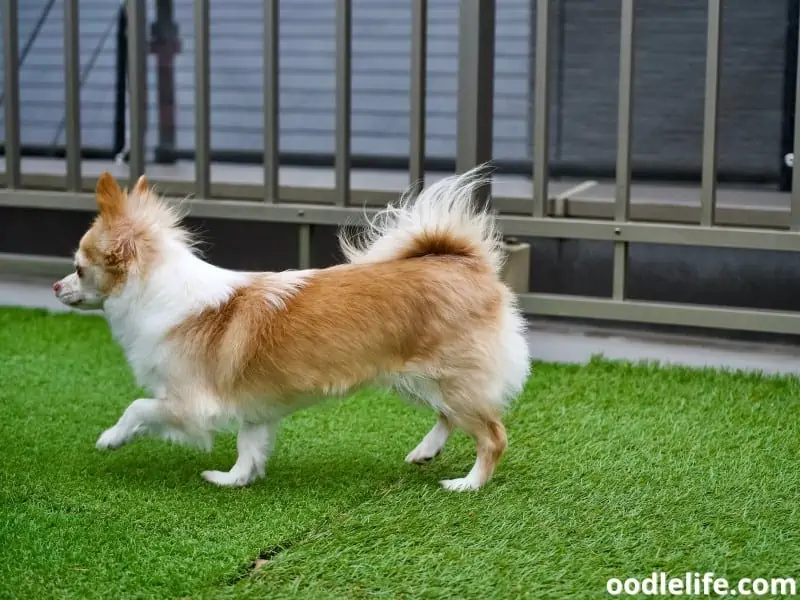
First and foremost, consider providing shelter from the rain so your dog remains dry while doing their business. Installing an awning or a carport in your backyard will not only protect your dog from the rain but also adds value to your property. Having a covered area will ensure that your dog feels secure and comfortable when going outside to pee in the rain.
Another option to ensure your dog’s comfort is to incorporate a designated area specifically for peeing. This can be a mulched or gravel spot that drains well and is quick to dry. Waterproof mats or artificial grass patches can also serve as suitable alternatives.
I made this self draining porch potty for my Labradoodle Max so he can potty in all weather.
By consistently training your dog to use this designated area, they will feel more at ease during their rainy bathroom breaks.
Before letting your dog out into the rain, check the outdoor temperature. Cold and damp conditions can affect your dog’s level of comfort. A simple solution for these situations is providing your furry friend with a cozy, waterproof jacket or sweater.
This not only helps keep them warm but also promotes a sense of safety and protection from the elements.
Take note to be patient and offer positive reinforcement when your dog successfully pees in the rain. Gradually build up their confidence by accompanying them outdoors and praising them when they complete the task. A tasty treat or verbal encouragement will go a long way in helping them overcome their hesitation.
Remember, rainy days shouldn’t be an obstacle for your dog. By creating a suitable outdoor environment, you’re ensuring their comfort and well-being, even during unfavorable weather conditions.
Factors Influencing Bathroom Habits in Dogs
When it comes to bathroom habits, dogs can be somewhat particular, especially in inclement weather. There are several factors that can influence your dog’s willingness to relieve itself in the rain. Understanding these factors can help you better attend to your dog’s needs and make the experience more comfortable for both of you.
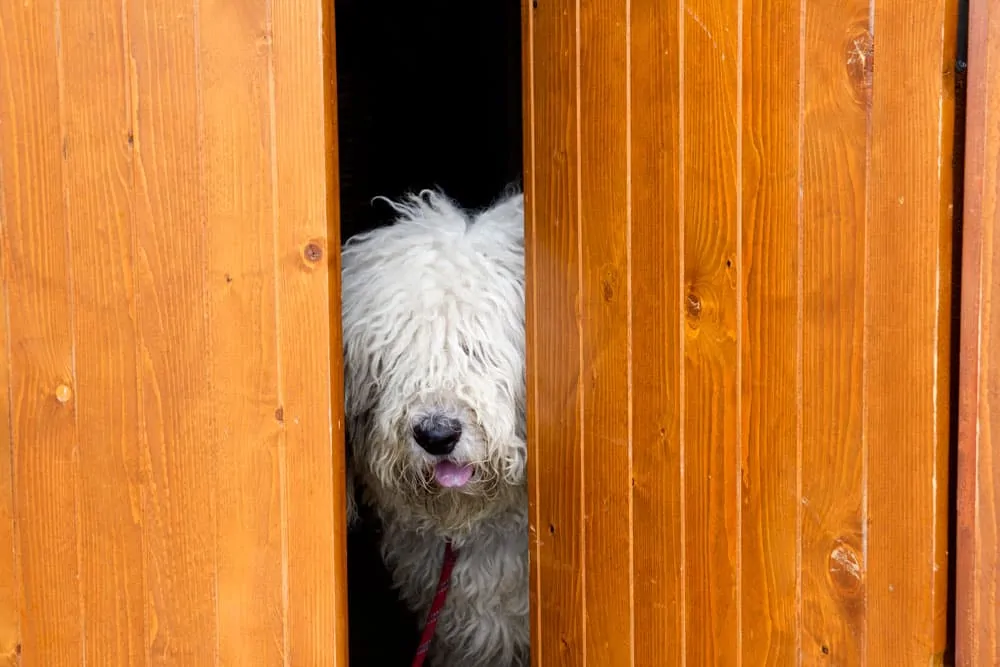
Firstly, many dogs have a natural aversion to getting wet. For some breeds, this is an inherent trait, while others may develop it over time. This aversion can be exacerbated by certain conditions, such as heavy rain, thunderstorms, or strong winds.
The discomfort your dog feels in such situations can make them reluctant to go outside to pee.
Next, the texture and feel of wet surfaces can also influence your dog’s willingness to pee in the rain. Wet grass, puddles, and mud may feel strange or uncomfortable for your dog’s paws, resulting in hesitation to venture onto these surfaces. Some dogs may simply prefer the feeling of dry grass or pavement for relieving themselves.
Moreover, the sound of rain might be bothersome for some dogs. The noise of raindrops falling on hard surfaces or against windows can be irritating for dogs with sensitive hearing. In extreme cases, your dog may even feel fearful or anxious due to the noise.
Temperature can also play a role in your dog’s bathroom habits during inclement weather. Cold and wet conditions can make your dog feel uncomfortable and unwilling to spend time outdoors for any length of time, let alone to pee.
Another important factor is your dog’s previous experiences with rain. If your pet has had any negative experiences in wet conditions, such as slipping on a wet surface or being frightened by thunder, they may associate rain with an unfavorable event. This can lead to reluctance to go outdoors during rainy weather.
As a dog owner, it’s essential to be patient and understanding of your pet’s preferences in different weather conditions. By identifying the factors that influence your dog’s bathroom habits, you can work together to create a more supportive environment and devise strategies to help them feel more comfortable during rain or other inclement weather situations.